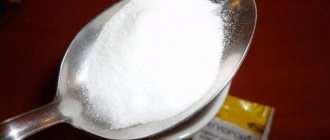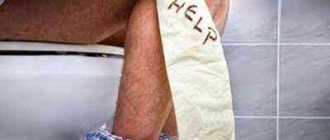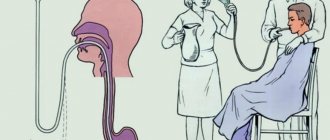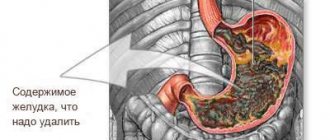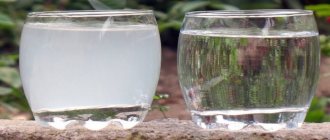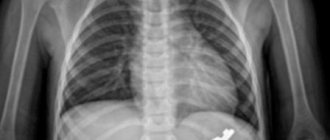04/10/2020 167 Treatment of alcoholism
Author: Evgeniy
An anti-binge drip is the only way to quickly relieve intoxication from the body and facilitate the functioning of the kidneys, liver and cardiovascular system. Only a specialized ambulance team or a narcologist can select the optimal composition of the medicine and administer an intravenous infusion.
[Hide]
Positive and negative sides
Almost any method of treating intoxication has advantages and disadvantages.
The main positive side of the application is the possibility of use in case of poisoning, which, as a rule, is accompanied by severe nausea, sometimes even vomiting. Indeed, if such symptoms are present, treatment for a hangover with pills is excluded for obvious physiological reasons. Advantages:
- The effect on the body begins much faster due to the entry of medicinal compounds directly into the patient’s circulatory system.
- It is possible to drip in any condition, and taking pills or injections is excluded due to nausea and vomiting after alcohol poisoning.
- Infusion therapy provides a gentle effect on the cardiac system in comparison with parenteral injections. This happens due to the slow administration of medicinal solutions.
- The composition of the dropper and the amount of its contents can be adjusted and quickly replaced.
- Substances used to relieve binge drinking consist of vitamins, hepatoprotectors to support the liver and medications to normalize blood pressure.
However, the technique also has negative sides.
Flaws:
- Drowsiness.
- The appearance of fatigue, lethargy of the body, inhibition of reactions.
- Difficulty breathing, aching joints.
Radical hardware methods of blood purification
In extreme cases of complex and life-threatening intoxication, there are hardware methods for purifying the blood. The most effective method of purifying blood is using stationary medical equipment, which is available in medium and large hospitals. toxicological and drug addiction institutions. There are several types of methods by which hardware restoration and purification of the patient’s blood is carried out, but two are most widespread:
- Plasmapheresis is a method when purified blood is sectioned into separate fractions. This is necessary to subsequently obtain a pure composition, then the concentrate is introduced into the plasma.
- Hemosorption is a hardware implementation when, to eliminate alcoholic metabolites, forced blood is passed through special sorbents that absorb and neutralize all poisons and toxins.
What are the types of drip cleansing and what do they mean?
Traveling narcologists engaged in private practice or narcological services from state, municipal or commercial hospitals, clinics, centers, as a rule, offer several types of drip treatment and different drugs. If you can understand the difference between a regular and a reinforced drip even at the layman level, then understanding the differences and the need for deep cleansing and other drug treatment know-how is not always easy.
What drips are there to relieve a severe hangover?
Blood thinner drip
This type of dropper is the most popular and effective. To prepare such a solution you will need a 5–10% glucose solution and physiological saline solution. With the help of such a solution, the concentration of alcohol in the blood decreases, and the lack of fluid in the vascular bed is also compensated.
Alcohol intoxication leads to hypovolemia - a lack of fluid in the blood and an excess in the tissues of the patient’s body. The dropper also has a diuretic effect.
Restoring salt balance
For this purpose, doctors use special solutions. The most effective ones include Disol and Acesol. Sometimes a regularizing solution can be prepared based on glucose. To prepare it you will need the following components:
- 10% glucose solution,
- magnesia,
- potassium chloride,
- insulin.
This solution helps correct electrolyte imbalances: lack of potassium, magnesium and sodium ions. These disorders are fraught with problems in the functioning of the heart and metabolism.
Droppers that help restore acid-base balance
Violation of the acid-base state of the blood occurs due to the accumulation of acidic products in the tissues, which are formed after the processing of alcohol. Violation of the acid-base balance entails the development of metabolic acidosis, which manifests itself in the form of muscle pain, shortness of breath and loss of consciousness.
In order to eliminate acidosis during a severe hangover, you should use a solution of sodium bicarbonate. During the administration of the solution, the medical professional must monitor the acidic state of the patient’s blood.
Fluid administration is necessary primarily in order to restore optimal blood volume. Restoration of electrolyte and acid-base balance - infusion therapy.
Carrying out detoxification and destruction of alcohol residues
The liquid detoxifier Remberin contains the following components:
- balanced electrolyte composition,
- succinic acid,
- fumaric acid.
The last two components are an integral part of normal metabolism in the body. These components have detoxification and antihypoxic properties. Droppers to cleanse the body may also contain unithiol and sodium thiosulfate.
Introduction of vitamins
To normalize metabolic processes in the body during a severe hangover, thiamine (vitamin B1), riboflavin (vitamin B2), nicotinamide (vitamin PP) and the enzyme cocarboxylazine are added to glucose.
Vitamin B1, also known as thiamine, plays an important role, since this component is involved in the oxidation of alcohol. Components such as:
- vitamin C,
- vitamin E,
- vitamin B6.
Droppers with hepatoprotectors supporting the liver
Please note that the metabolism and neutralization of alcohol occurs in the liver, so doctors introduce special hepatoprotectors that help restore it. Essentiale is often used as a hepatoprotective drug
The drug is injected into a vein with a dosage of 5 to 10 ml.
Reaction control
Despite the fact that such droppers can be used at home, doctors recommend that patients seek help from a specialist. The narcologist will examine the patient to rule out the presence of kidney disease, which is important when placing an IV. After the examination, the doctor will select the necessary composition of medications and doses for a particular patient.
After the IV is placed, the patient should not be left alone. At this moment, he needs the support of loved ones, relatives or one of his friends. The person sitting next to you will be able to react in time to the side effects that sometimes occur.
It is best to entrust the placement of an IV to a specialist
Types of IVs for alcohol intoxication
The composition of the dropper for alcohol intoxication may vary depending on the individual characteristics of the patient, as well as the results of a blood test for the percentage of sodium, magnesium, calcium and potassium in it. It is recommended to test the acidity (pH) of the blood and pass the necessary biochemical tests.
If it is not possible to find out such indications due to emergency care at home, the doctor performing the procedure must determine the composition and volume of the solution. Today, the following types of IV drips are installed.
To restore acid-base balance
During the breakdown of ethanol metabolites, a change in enzyme activity occurs; the concentration of glycerol, as well as pyruvic, lactic and various fatty acids in the body increases. This leads to serious disturbances in the acid-base balance, metabolic acidosis and significant difficulties in the occurrence of natural biochemical reactions.
Acidosis manifests itself in the form of muscle pain, shortness of breath, general weakness and other nonspecific symptoms. For alcohol intoxication and severe hangover, patients are administered a four percent solution of soda (sodium bicarbonate) through a dropper. It must be transfused taking into account permanent monitoring of the acid-base state of the blood and proper dosage selection.
Restoring salt balance
After a binge, it is very important to replenish the resulting deficiency of sodium, magnesium and potassium ions, so they are administered intravenously in order to quickly correct electrolyte metabolism disorders. To solve such problems, doctors usually resort to polyionic solutions of crystalloids, the most common of which are Disol, Acesol, Panangin and calcium chloride
Often, an anti-binge drip designed to restore salt balance includes a ten percent glucose solution in combination with insulin.
Droppers with glucose and salt
Which droppers are considered the most popular for withdrawal from binge drinking? The leading positions today are occupied by droppers with physiological solution of sodium chlorine and glucose (from 5 to 10%). Thanks to the use of such solutions, it is possible to reduce the concentration of ethanol in the circulatory system and replenish the critical lack of fluid in the body. Alcohol poisoning entails hypovolemia, which is expressed in excess amounts of blood localized in the tissues and its lack in other vital systems and organs.
Glucose deficiency has the most negative effect on brain functioning and the patient’s condition
This type of cleansing has a diuretic effect and leads to forced diuresis. In cases where patients experience alcoholic coma, a drop in blood pressure occurs. Therefore, during prolonged binge drinking, they often resort to the help of special hemodynamic solutions that extract fluid from tissues and allow it to be retained within the vascular bed.
Detoxification
In some cases, detoxifying solutions, such as Methusol and Reamberin, are very effective in getting rid of alcohol. They are distinguished by a balanced electrolyte composition, supplemented with components such as:
- fumaric acid;
- succinic acid;
- a number of other excipients that have an antihypoxic and detoxification effect.
Detoxification using such a solution is often a more effective method than using soda, since it can eliminate most of the negative symptoms of acidosis much more gently and stabilize the alcoholic’s condition.
Maximum security
In order for withdrawal from binge drinking at home to be effective and not associated with dangers for a person, it is reasonable to invite a professional who can choose the right medications, calculate the dosage, and give the injection correctly. Qualified specialists know perfectly well how to give injections correctly. You need to understand: if the technique of administering drugs or mixing formulations is not followed, there is a high probability of severe complications. There may be a situation of categorical contraindications to any invasive procedures against the background of heavy drinking. The doctor will quickly identify such a case and explain to clients why an IV should not be placed.
When planning a withdrawal from binge drinking at home, you should agree with your doctor on the composition of the drugs administered through the device. Both the dosage and the set of medications are chosen strictly individually. This takes into account the person’s condition, the duration of addiction to alcohol, the presence of concomitant diseases, and a tendency to an allergic reaction.
Alcohol intoxication, how to avoid it
Unfortunately, it often happens that an ambulance does not always arrive quickly when called. Therefore, everyone should know what to do before the doctor arrives in case of alcohol intoxication. Alcohol poisoning of the third degree cannot be survived at home. But you can help the patient and make it easier to survive this condition. Before the feast, it would be correct to eat a plate of semolina porridge or drink a mug of milk. It is also useful to take a multivitamin tablet before drinking alcohol. Of course, the above remedies will not help avoid poisoning in full. But still, they minimize the harmful effects of ethanol on the body. In addition, both cereals and milk are completely harmless. In case of poisoning, it is necessary to drink plenty of fluids. If you bring your water balance back to normal, your condition will improve. It is worth understanding that drinking plenty of fluids during intoxication helps remove toxins due to the diuretic effect. If you are poisoned by alcohol, you should not drink cucumber pickle. After all, when combined with ethanol, it slows down the removal of toxic substances. In case of severe alcohol poisoning, you can take an aspirin tablet. It eliminates pain and helps get rid of signs of poisoning. Vomiting is the body's protective reaction to poisoning. Therefore, you should not restrain them; vomiting will help cleanse the body of ethanol breakdown products and other harmful substances. In case of mild poisoning, it is useful to get enough sleep and rest. It is better to survive any degree of alcohol intoxication while lying in bed. On your feet, this condition is very difficult to survive, rather even dangerous.
Doctors say that there is no better remedy for alcohol poisoning than a drip.
How to call a narcologist at home
Getting help from narcologists at the NarMed clinic is quite simple. We work around the clock . Just call the reception department and tell us about your problem, and we will definitely help you. In cases where there is no risk to the patient’s life, home treatment . An anti-intoxication drip will help you quickly regain sobriety and feel good. If there is a possibility of complications , the patient will need to be hospitalized. After treatment with a drip, it is recommended to undergo an additional health examination , and, if necessary, begin complex therapy for dependence on alcoholic beverages.
Call for a free consultation with a narcologist +7 (495) 648-66-16
Stages of intoxication and their symptoms
In order to timely determine the pathological condition of the patient, it is necessary to understand and know the symptoms and signs of all stages of intoxication.
In order to timely determine the pathological condition of the patient, it is necessary to understand and know the symptoms and signs of all stages of intoxication (intoxication). So, doctors distinguish three degrees of intoxication:
- Easy. In this case, the person exhibits increased agitation and talkativeness. The skin of the face turns slightly red. A sparkle appears in the eyes. Concentration decreases. If a person stops drinking alcohol at this stage, drowsiness will appear within a couple of hours. As a rule, if the body is healthy, the next morning the drinker will have neither a hangover nor headaches.
- Average severity of alcohol intoxication. In this case, the amount of alcohol already exceeds the norm for a healthy body. The person experiences a loss of coordination of movements and disorientation in space. A nausea-vomiting reflex may occur. As a rule, at this stage of intoxication, the drinker may suffer from fragmentary amnesia (memory loss in fragments). The next morning the patient experiences a hangover (withdrawal syndrome), which indicates sufficient alcohol poisoning.
- A severe degree of alcohol intoxication is manifested by loss of consciousness, bluish or pale skin, threadlike pulse, and intermittent breathing. Convulsive seizures are possible. In this case, it is necessary to urgently call an ambulance.
For mild to moderate alcohol poisoning, you can rinse the patient’s stomach with saline or manganese solution. A solution of ammonia (5 drops of ammonia per glass of chilled boiled water) is also suitable. After taking the mixture, you need to provoke a gag reflex by pressing your finger on the root of the tongue. As soon as the stomach is cleared of ethanol residues, the patient should be given one of the sorbents and put to sleep. Enterosgel or activated carbon are often used as sorbents.
Degree of poisoning
Alcohol is a poison with which a person poisons himself quite consciously. Symptoms of alcohol poisoning are:
- dry mouth;
- vomiting and severe nausea;
- headache and dizziness;
- impaired coordination/orientation in space;
- hand tremors and mental disorders up to hallucinations.
When the ppm in the blood increases to 1.5 units, some people may feel drowsy, and some may experience excitement of the nervous system. The person is overexcited, cannot fall asleep and disturbs everyone around him - he becomes talkative. At the same time, coordination of movements is unbalanced.
At 2.2 units ppm, a person experiences severe dizziness and the sense of space disappears. Speech becomes incoherent - this is an average degree of intoxication.
If there is 3 ppm in the blood, a strong degree of intoxication occurs. The person cannot move normally, falls and cannot get up. In this case, involuntary emptying of the bladder/bowels is observed.
If there is five ppm in the blood, coma can occur, and then death. A person’s reflexes disappear, breathing stops, and circulatory dysfunction occurs.
What is alcohol intoxication
If the alcohol content exceeds 2 units in a person’s blood, then the most severe stage of intoxication may occur.
Thus, in the first or second degree, a person who has been poisoned by alcohol has a headache, because alcohol dilates blood vessels and alcohol enters the brain in unacceptable quantities. The patient may experience dizziness and even nausea and vomiting. Strong thirst will also let you know that a person is experiencing ethanol poisoning. These symptoms relate to the first two stages of intoxication, which, although unpleasant for the body, their consequences will soon pass. If the patient is not helped in time, the third stage may occur, in which there is a risk of coma. At the last stage of poisoning, a person is not able to control his body; it is difficult for him to even sit. The pupils of the eyes are constricted, the skin is sticky, and the person cannot speak coherently.
The last, most dangerous degree of toxicosis can be fatal, which is why it is so important to act quickly. If with the first two degrees of poisoning there is a chance to cope at home without medical assistance, then with the last degree the help of a physician is definitely necessary
If you notice that a person is very intoxicated, he cannot even sit and is in a state close to fainting, then you must immediately call an ambulance. Until her arrival, do not leave the patient a single step. If you want to help, you can insulate the patient with a blanket, because the blood vessels of a person who is experiencing an unpleasant process of intoxication are dilated, which means that he intensively loses heat, because his heat exchange is impaired. If the patient is conscious, you can help him get rid of toxins by inducing gag reflexes: in this way, the body will get rid of excess alcohol in the stomach, which has not yet been absorbed into the blood.
Doctors will most likely recommend drips for the patient. A dropper is the best way to help with alcohol poisoning, because the drug goes directly into the blood. There are a great variety of droppers that are used to alleviate the patient’s condition with this type of poisoning: for example, there are droppers that will help restore water balance and also remove toxins. In severe forms of poisoning, the patient is given drugs that help restore breathing and liver function. Moreover, vitamins are added to some solutions to speed up the process of a person recovering from toxicosis. Also, droppers differ depending on the period when the dose of alcohol was drunk: there are droppers for hangovers, as well as for alcohol poisoning. Let's look at each type in more detail.
Improving access to the vein
The key to a correct injection is the accessibility of the vein and its visibility. Many improve access to it incorrectly, this is due to conflicting information from dubious sources. Experienced doctors advise focusing on 5 methods.
Lots of liquid
Give the person water (at least 250 ml) one hour before you give the medicine. Why is this necessary? For two reasons:
- The amount of water in the body directly affects how quickly blood is pumped through the veins. And this speed affects how noticeable they are.
- If you are dehydrated, it is quite difficult to find a vein, especially for a layman.
The following method will help you get closer to the desired result.
Vein palpation
Find the vein (or its suspected location) and place your finger. Use it to massage the area for 30 seconds, but do not press too hard. This simple procedure will increase the size of the vein, making it better visible.
There is a myth associated with palpation. It is believed that if you slap a vein with your fingers, it will move closer to the surface of the skin. In fact, a person will achieve only the opposite result. The vein will shrink and it will be difficult to notice.
Departure is paid separately - 300 rubles
Call any time of the day:
Warming
You can start searching for a vein with this method, as it is quite effective. This is due to the fact that the vein expands and enlarges due to heat. It is best to keep the person you are injecting warm. There are some tips:
- If it is cold outside and the person has just come home, do not give the injection. Wait until it warms up. It is recommended to cover him with a blanket and let him relax.
- Hot drinks work great, be it coffee or tea. The ideal option is to take a bath, but do not inject directly while bathing.
- If you don't have time for this, take a towel and place it in the microwave (30 seconds is enough). It heats up quickly and can be wrapped around the vein. Another option is to wet the injection site and then warm it with a hairdryer.
Heat is an excellent option if you are going to have an IV for complex veins, so you should not ignore this method.
Principle of gravity
The method, despite its simplicity, is very effective. Have the person lie down on a bed or sofa with their arm hanging down. This is where the principle of gravity comes into play: blood begins to flow into the arm, causing the veins to become darker, more visible and larger.
You can try another way: the person needs to extend his arm and make circular movements. Half a minute is enough for the veins to be visible for a long time.
Shrinking
In everyone's house there is a rubber ball or an object that replaces it. A person only needs to intensively squeeze and unclench it, due to which the veins will be more noticeable. Such a ball is especially worth purchasing if you are going to have an IV with complex veins. After all, if there are no particular problems with their visibility, it is enough to simply clench your hands into fists and unclench them.
Action and composition of droppers for alcohol intoxication
In case of alcohol intoxication, droppers are selected for the patient depending on the effect of the drugs in its composition. They may have properties such as:
- blood thinning;
- stabilization of salt balance;
- normalization of acid-base balance;
- detoxification.
To thin the blood, the patient is prescribed glucose, saline solution, and hemodez. With severe alcohol poisoning, blood accumulates in the tissues, forming clots. The consequence of this condition can be low blood pressure and coma. Thanks to the action of such a dropper, the water balance returns to normal and the patient’s condition improves.
Elevated levels of alcohol in the blood lead to an imbalance of potassium and magnesium. As a result, a malfunction of the cardiovascular system occurs. To normalize the functioning of the heart during alcohol intoxication, the dropper should include panangin, insulin, calcium chloride, acesol, disol and others.
Droppers are also used to restore acid-base balance. With the second and third degrees of alcohol poisoning in the body, the amount of products that are not completely oxidized increases. Various acids, glycerin and other under-oxidized substances can lead to increased acidity, which disrupts the rate of biochemical reactions. In this case, the dropper contains only sodium bicarbonate. It does not mix with other drugs and is rarely used at home, since the administration of a 4% soda solution requires careful monitoring of the chemical composition of the blood.
Another important benefit of hangover drips is detoxification. Alcohol breakdown products poison the body and prevent it from functioning normally. In order to remove alcohol from the blood, solutions of sodium thiosulfate, unithiol, reamberin, and mafusol are used. These drugs can also be used to restore the acid-base balance; their effect is more gentle than sodium bicarbonate. Thanks to their properties, the composition of electrolytes in the blood is restored and inflammation is relieved.
Types of IVs for alcohol intoxication
The composition of the dropper for alcohol intoxication at home or in the hospital should be determined by the doctor depending on the patient’s condition and accompanying symptoms. Depending on the action, there are several types of droppers:
- blood thinners;
- antiemetics;
- restoring renal activity;
- hepatoprotective;
- to restore breathing;
- anticonvulsants;
- to normalize the functioning of the heart and blood vessels;
- antiallergic;
- normalizing blood pressure;
- relaxing;
- improving blood supply to the brain;
- vitamins;
- restoring salt and acid-base balance;
- sleeping pills.
A hangover dropper may contain one or more drugs. To maintain the patient's condition, droppers with vitamins are placed. They improve general condition, normalize metabolism, increase tone and resistance. Since the liver suffers greatly after alcohol poisoning, hepatoprotectors are prescribed. Thanks to their properties, the liver is cleansed of toxins, the cell membrane is strengthened, and the functioning of the organ is normalized. In case of alcohol intoxication, droppers have a beneficial effect on the body, restoring the salt and acid-base balance.
What is most often dripped during alcohol intoxication: solutions of electrolytes and sugars, isotonic solution, vitamin complexes, sodium bicarbonate, calcium chloride, glucose solution, panangin, Ringer's solution. The composition of the dropper is determined by the doctor according to the patient’s condition.
Contraindications to the use of droppers for alcohol intoxication
Before carrying out infusion treatment, the doctor examines the patient and listens to his complaints. After this, a group of drugs is selected. There are a number of contraindications to the use of IVs for alcohol intoxication:
- elderly age;
- cardiovascular diseases;
- diabetes mellitus and bronchial asthma;
- the duration of the binge is more than 7 days.
If the above conditions are present, treatment should only be carried out in a hospital under supervision. In this case, placing an IV at home is not recommended, as there is a risk of complications and a threat to life. It is strictly forbidden to install an IV yourself; this procedure is performed only by an experienced doctor.
Optimal time
Many people wonder at what time of day they put an IV in this condition? The morning hours are considered the best time to bring a patient out of this condition.
The patient, who has slept well, gets up with the thought that it is time to stop drinking. At this time, the treatment procedure will have the best effect and impact. Since a state of intoxication sharply reduces the effect of medications, it is better not to use an IV in the evening. Alcohol present in the patient’s body prevents complete blood cleansing. The body will continue to absorb alcohol, and under the influence of sleeping pills in the IV, unpredictable complications may arise.
Composition of a dropper for detoxification
During this period, the body is poisoned by the breakdown products of ethanol. Therefore, detoxification medications must be prescribed. For infusion, saline solution (NaCl 0.9%) and 5% glucose solution are used. Additionally, agents are used to accelerate the outflow of fluid from cells (diuretics or diuretics). The dosage depends on the age and weight of the patient, the severity of his condition.
Additional components:
- hepatoprotectors;
- antioxidants;
- nootropics;
- metabolic drugs.
Body detox
To cleanse the body of alcohol breakdown products, doctors give the patient IVs, which include detoxification solutions:
- insulin;
- glucose 40%;
- Hemodez;
- Pyridoxine;
- Panangin;
- B vitamins;
- Metadoxyl.
Against dehydration
Withdrawal syndrome is a severe pathological condition that is accompanied by disruption of the functioning of all vital organs and systems. Poor condition is not the only problem in its development. In severe clinical cases, coma may occur (due to a sharp decrease in blood pressure).
In case of alcohol intoxication, it is necessary to simultaneously remove excess fluid from the patient’s body and thin the blood. For this purpose, a drip with saline or 5% glucose is placed. The volume of infusion depends on the person's condition. Most often, 400-500 ml are administered.
Restoring acid-base and salt balance
With prolonged heavy drinking, electrolyte disturbances occur in the body. This negatively affects the condition of all organs and systems. To restore balance after ethanol intoxication, narcologists administer droppers that include Disol, Panangin, and calcium chloride. Within 10-15 minutes after the start of administration, the patient’s condition improves.
For acute alcohol intoxication, it is recommended to use 4% sodium bicarbonate. It will help quickly relieve the symptoms of poisoning.
To thin the blood
Intoxication of the body is accompanied by thickening of the blood. This is fraught with changes in blood pressure, disturbances in general well-being, and dizziness. Thick blood moves slowly through the blood vessels. As a result, all organs and systems experience oxygen starvation, since oxygen molecules enter them “late”.
Composition of an anti-binge drip for blood thinning:
- 0.9% saline solution. Its main task is to replenish the lack of water, normalize the water-salt balance and reduce the concentration of ethanol in the bloodstream.
- 5-10% glucose. It has a diuretic effect and fills the body with energy.
- Hydroxyethyl starch. This component normalizes blood pressure and helps transport fluid from tissues to blood vessels.
To improve breathing
Breathing problems may occur. The reason lies in the opium receptors of the brain. Drugs are added to the drip that block their action in order to restore respiratory function and prevent breathing from stopping. You can interrupt the connection of ethanol with opiate receptors in the brain using the drug Naloxone.
To normalize liver function
The liver is the organ that is first affected during alcohol consumption. It has a special feature: its fabrics can be renewed. With chronic alcoholism, cirrhosis can develop, which causes death. A drug addiction specialist prescribes an anti-binge drip, composition and dose. To protect the liver, hepatoprotectors must be added to the composition. They help the organ cope with toxins entering it. After 20 minutes from the start of administration, the patient notes that the heaviness in the side and bitterness in the mouth disappear.
Drugs to normalize liver function:
- Karsil;
- Essentiale;
- Gepabene.
Additional substances
To normalize blood pressure, calm the patient, and dilate the blood vessels of the circulatory system, you can use magnesium sulfate. This substance fights seizures. Sometimes thiamine is administered through an IV, which is useful when it is necessary to eliminate symptoms of withdrawal. This vitamin helps prevent neuropathy due to addiction to alcohol.
To protect the liver, it can be included in the basic solution for infusion "Essentiale". The drug is quite strong, effective as a preventive measure in cases of high probability of cirrhosis. It has the ability to stabilize liver activity. Ascorbic acid is included in the solution for administration through a dropper in order to improve the patient’s immunological status. Ascorbic acid normalizes the activity of the pancreas and thyroid glands.



